The cache is not at the listed
coordinates!
Find cache at N 48 07. ABC W 122 47.
DEF
Waypoints below
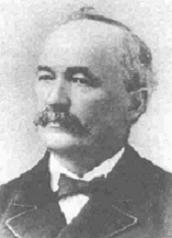
A Prussian emigre, Charles Eisenbeis arrived in Port Townsend in
1858.
Imbued with a strong entrepreneurial drive, he was also infected
with the popular delusion that Port Townsend would become a major
seaport. To this end he established and operated, among other
enterprises, a cracker factory, a brickyard, and the first brewery
in Washington Territory.
Eisenbeis was the town’s first mayor, and served three
terms.
During the late 19th century he was involved in almost every
large scale political and economic project in Port Townsend,
including such star-crossed ventures as the Port Townsend Southern
Railroad and the Eisenbeis Hotel. The latter, completed just weeks
before the big bust, never served a single guest.
Although of relatively humble beginnings, Eisenbeis projected
such archetypical Prussian demeanor that he was often referred to
as the “Baron”. He had a penchant for grand style, and was never
satisfied with anything but the biggest and the best. He modeled
his home, now known as Manresa castle, after the great estates of
Bavaria.

As did many of his contemporaries, he lost most of his wealth in
the depression of 1890. Despite the economic reversals, he never
conceded his pride or dreams. When he died he was buried, true to
form, under the biggest tombstone in town.
Find the last digit of the year son
Fred was born in, and subtract 1 =A
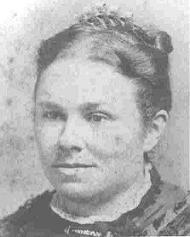
Sarah Cheney was one of the 11 young women in the first group of
"Mercer Girls", who sailed from Massachusetts in 1863. These were
young women brought to Washington by Asa Mercer, the first
president of the University of Washington. Some say it was a lack
of teachers, and some say a lack of marriageable young women that
drove him to travel to the east coast.
Sarah was to teach art at the university, but no students
enrolled for her class. She also had been trained in music and was
further discouraged by the appearance of only three students after
being given alternate assignment to that department. She applied
for a job teaching in Port Townsend, and was welcomed with open
arms by the young city. Many of Port Townsend’s children received
their first training under her tutelage.
During a dance at Fort Townsend, Sarah met Charles Willoughby,
then serving as master of the coast survey ship Fauntleroy, and
they were married October 5, 1865. He was a widower with a three
year old son. They had five more children together. He later spent
time as the Indian agent on the Makah reservation at Neah Bay. The
older children learned to speak both the Makah and Quinalt
tongues.
After Captain Willoughby’s death in 1888, Sarah returned to Port
Townsend and invested in real estate and the Call newspaper, where
various of her sons worked in later years. She died of ptomaine
poisoning at the age of 72.
The third digit in the year Sarah was
born=B
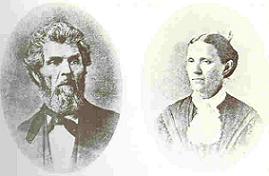
L B Hastings was born in Vermont, came to Oregon in 1849 and
settled in Portland, where he worked for a time with F W
Pettygrove. In 1851, Hastings and Pettygrove left Portland en route
to Puget Sound.
In a little flat bottomed skiff they paddled down the Willamette
and Columbia Rivers, and up the Cowlitz as far as they could go.
From here they trudged sixty miles through unbroken wilderness,
carrying their food and blankets, to the headwaters of Puget
Sound.
They settled on Port Townsend Bay as their future home, and
returned to Portland. Hastings purchased the pilot boat Mary Taylor
which brought the two families and a few additional settlers to
Port Townsend, arriving in February of 1852. Lucinda Hastings is
credited with being the first white woman in town, as she preceded
Mrs. Pettygrove off the boat.
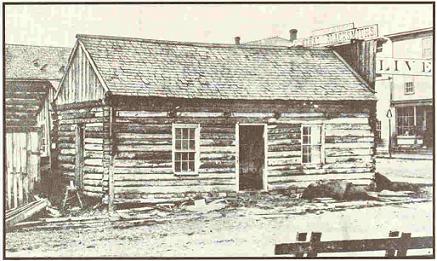
The Hastings and Pettygroves were fortunate to have Alfred Plummer
awaiting them with the cabin he had constructed - as it was
recalled in later years that a foot of snow fell during their first
night on shore. The then single Plummer and Charles Bachelder
shared the 15 by 30 foot cabin with the two families for that first
winter.
Loren B Hastings lived 66 years, 6
months and 2"C" days
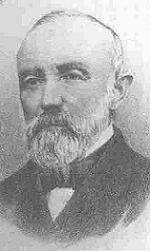
Perhaps James Swan should be counted as one of Port Townsend's most
famous citizens, but there are many here who would not recognize
the name of this incredible and paradoxical man. Friend of the
Puget Sound Indians, Swan is perhaps best remembered as a frontier
scientist whose interest in Native American culture led him to
collect many of the Smithsonian Institution's most valued artifacts
from this area.
But Swan was not a person of single dimension. His occupations
and preoccupations included anthropologist, student of nature and
literature, promoter, historian, ethnographer, folklorist,
naturalist, lawyer, legal legislator, doctor, cook, schoolteacher,
musician, artist, journalist, boat-builder, commission merchant,
justice of the peace, diplomat, linguist, notary public, county
school superintendent, railroad speculator, customs official,
homesteader and explorer.
He was an obsessive diarist, and an indefatigueable man driven
by a flywheel of curiousity.
Swan's life was filled with failed enterprises and false starts
that led to crankiness, bouts of excessive drunkenness and poverty.
Still, it is hard not to love a man whose imaginative ambitions
included a fantasy of making paper from Puget Sound seaweed.
The same hindsight that notes his failures shows us a lifetime
of continuous curiosity and dedication that provided a fund of
knowledge and collection of artifacts that simply would not have
been preserved if he had not lived as he did.
When he died, his debts were greater than his assets, and his
executer had trouble raising enough money for his gravestone.
The last digit in the year of Swan's
death = D

Alfred Augustus Plummer came to Port Townsend in April of 1851,
attracted by the deep harbor for purposes of logging.
A native of Maine, Plummer had come to Puget Sound via Texas,
traveling across northern Mexico to Mazatlan in 1849, just after
the conclusion of the Mexican War.
Uninterested in prospecting, Plummer became a hotel keeper in
San Francisco.There he met Captain Lafayette Balch, who had made
several trips to Puget Sound for piling and squared timbers. He
advised Plummer to head north.
Plummer is generally acclaimed as the "founder" of Port Townsend
by virtue of the date on his land claim, filed in Olympia in
1851.
Plummer became county auditor, an office that gave him the
distinction of recording the first marriage license - his own, to
Anna Hill.
Add the last digit in the year of
Alfred's birth to the last digit in the year of Anna's birth =
E

Oregon's largest city is something of a half-sister to Port
Townsend, as they were both cofounded by Francis Pettygrove.
With a good friend from New England, Pettygrove established the
Oregon settlement in 1844. Pettygrove wished to name the new city
for the largest city in his native state of Maine, while his
partner wanted to call it Boston. They flipped a coin, and
Pettygrove won.
In 1851, Pettygrove sold his holdings and joined Loren Hastings
to settle farther north in Port Townsend. Here he helped lay out
the town and became it's first postmaster. He was later
superintendent of schools.
The day in October of Pettygrove's
death =F
*****************************************************
We came with a small cache to hide here, but ended up feeling
uncomfortable having a trading cache in the cemetery. So, this is
just another film canister. We'll give you history here, and
trinkets someplace else. Please bring your own writing instrument.
Enjoy!
FTF honors to Ski's